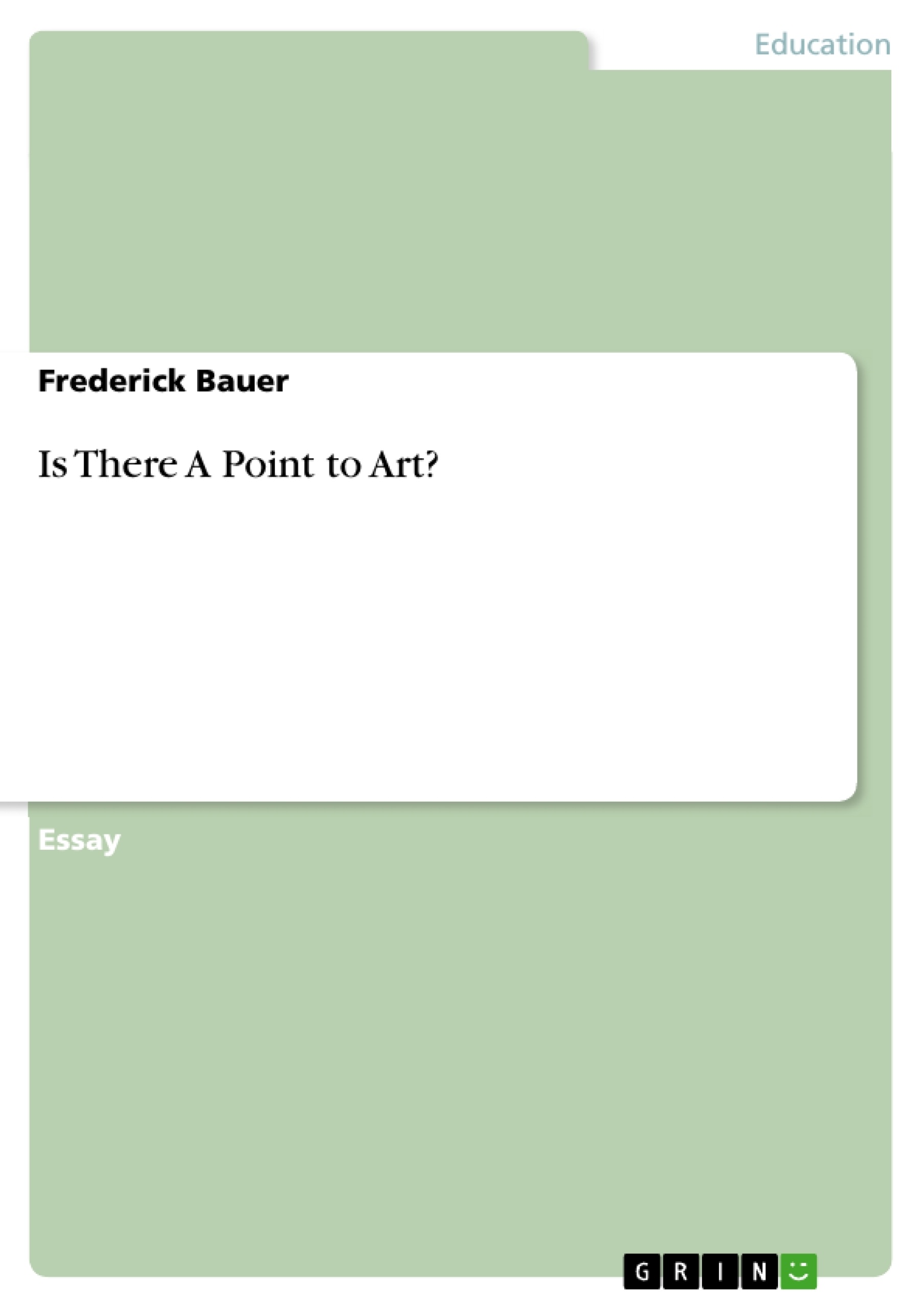The definition of art is a constant matter of controversy. Some only want to recognize as art what is considered to be beautiful in a very conventional sense; others consider everything art what is called so. What has always remained certain, however, is the relevance of art regarding specific aspects of society like ideas, history, or education. Nevertheless, it is still a matter of controversy whether there is a point to art at all. If we take a closer look at the aspects related to art, we will find out that, on one hand, society as a whole has relevance for art because it is society that yields art, and, on the other hand, art has a considerable impact on society as well. By taking a closer look at this impact, it becomes clear that there is a point to art. As one case in point, we can single out education as one positive effect, among many others, art has on society. Art serves society because it is both a medium and a matter of education. Although often unconsciously and by accident, knowledge about facts is imparted by means of art. Moreover, art makes people think and reflect upon the matter art is concerned with. Last but not least, art lifts us out of the rational scheme of reasoning by teaching us how to discover the full array of emotions beyond the constraints of our common sense.
Is There A Point to Art?
The definition of art is a constant matter of controversy. Some only want to recognize as art what is considered to be beautiful in a very conventional sense; others consider everything art what is called so. What always remained certain, however, is the relevance of art regarding specific aspects of society like ideas, history, or education. Nevertheless, it is still a matter of controversy whether there is a point to art at all. If we take a closer look at the aspects related to art, we will find out that, on one hand, society as a whole has relevance for art because it is society that yields art, and, on the other hand, art has a considerable impact on society as well. By taking a closer look at this impact, it becomes clear that there is a point to art. As one case in point, we can single out education as one positive effect, among many others, art has on society. Art serves society because it is both a medium and a matter of education. Although often unconsciously and by accident, knowledge about facts is imparted by means of art. Moreover, art makes people think and reflect upon the matter art is concerned with. Last but not least, art lifts us out of the rational scheme of reasoning by teaching us how to discover the full array of emotions beyond the constraints of our common sense
Art gives a basic idea of the issues it deals with. Even though usually not the main point to art and therefore often by accident, this is a basic educational effect of art. Without the historical images of persons, for example, we had no idea how they looked like. At least, everyone who is confronted with such images learns that they are considered to be art. Knowing that something is considered art is the most basic educational effect art can provide. However, most visitors of a museum of classic paintings coincidentally learn a lot about the things that are depicted, about the historical context, or simply who is depicted. These information was usually presupposed by the artist; nonetheless, they are education to those who did not know these things before. By contemplating a depiction of a landscape by Brueghel, for example, the viewer learns quite a few things about the time, like the style of clothing and architecture, or the historical shape of cities and regions. Moreover, historical images can provide surprising insights into history by depicting things that cannot be found in textual sources. Furthermore, studying history would remain a merely theoretical and dreary affair if it had to only rely on non-art texts. Solely because of literary texts and pictures that show other aspects of historical life and how things looked like, history comes alive. Therefore, visiting great architecture and great works of art in the course of an educational journey provides more profound insights than any scientific text could do. It becomes apparent that these educational side-effects apply to all forms of art. For instance, the audience of a performance of Shakespeare´s Henry VIII becomes acquainted with the political and religious quarrels of the Tudor Age and, moreover, receives an impression of how Elizabethan English sounded like. Of course, the play itself was surely not intended to teach Elizabethan English or historical dates and names. Brueghel and Shakespeare were not historians who wanted to preserve their times for later generations; first and foremost, they were artists. However, their works are matters of historical education today, going beyond their actual intention. In many cases, art of previous times becomes an important if not the only source to reconstruct many aspects of the past.
[...]
- Quote paper
- Frederick Bauer (Author), 2010, Is There A Point to Art?, Munich, GRIN Verlag, https://www.grin.com/document/194216
-

-

-

-
Upload your own papers! Earn money and win an iPhone X. -

-
Upload your own papers! Earn money and win an iPhone X. -

-
Upload your own papers! Earn money and win an iPhone X.

